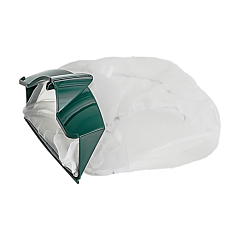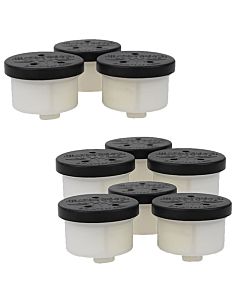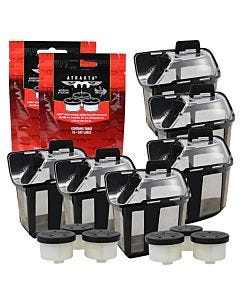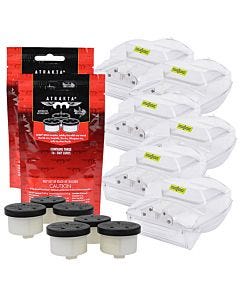
The sound of mosquitoes buzzing around your ears is annoying, but their bite is potentially dangerous to your health. Large populations of mosquitoes make it almost impossible to enjoy your outdoor space and activities.
Control Mosquitoes In Your Backyard Today
Mosquitoes are a major problem in warm weather when you and your family want to spend time outdoors entertaining, playing games, or enjoying your deck or patio. If you don’t want to be restricted when you’re sitting outside, or have to spray on smelly repellents each time you go out, you need to find other mosquito control alternatives.
There are solutions that give you and your family the freedom to go outdoors when you choose without fighting off swarms of hungry mosquitoes. While there are many options when it comes to outdoor mosquito control, not every solution is effective. It may only offer a short-term solution.
If you want the best mosquito control for your yard, prepare for battle early and choose a product that offers long-term control. We have compiled a list of mosquito solutions designed to help you take back your yard.
- Mosquito Traps
- Mosquito Larval Control
- Air Curtains
- Mosquito Misting Systems
- Mosquito Nets
- Integrated Pest Management
Understanding Your Enemy
In the United States, there are over 150 species of mosquitoes and most mature from an egg to an adult in no time. Mosquitoes are small, slender flying insects with piercing proboscis. Adult males feed on plant juices, while the females feed on you.
Predatory females find their host by detecting carbon dioxide and skin odor. Mosquito larvae obtain nutrition by filtering plankton from water. Mosquitoes need water to reproduce, and they find water in various places such as:
- pet dishes
- fishponds
- old tires
- planters
- drainage ditches
- and more
This is why removing standing water is your first defense against these pests. Female mosquitoes lay their eggs on the surface of the water — the eggs feed on bacteria in the water.
During the day, mosquitoes also seek shelter from the sun and become more active in cooler evening air or in shady areas of your yard.
What Health Risks Are Associated With Mosquitoes?
While not all varieties of mosquitoes bite humans, those that do are known to carry various diseases that can spread to you and your pets. All female species of mosquitoes require a blood meal to lay eggs. They get this blood from humans, pets and livestock.
During feeding, females can transmit various viruses to humans and animals. Depending on the virus, humans may suffer neurological, serious, or fatal conditions. Contrary to the fears, mosquitoes cannot spread HIV/AIDs. HIV cannot replicate in mosquitoes, so they are not carriers of this virus.
The death toll from mosquito bites is 7,250,000 per year.Mosquitoes regurgitate saliva from a separate tube from which they take in blood. So unlike, sharing dirty needles, mosquitoes have a tiny amount of blood on the mouthparts. This means there is no risk in contracting HIV/AIDs via a mosquito bite, but other viruses are a top concern.
You can contract a virus if a mosquito bites an infected person and then bites another. Some viruses transmitted in the United States include West Nile virus, encephalitis, and Dengue fever (in rare cases).
Most people infected with West Nile Virus have no symptoms. Only about 20 percent experience symptoms, and these can include fever, body aches, swollen lymph nodes, tiredness and headaches.
Mosquitoes can transfer viruses from animals, such as a bird or a horse, to humans. These viruses can lead to encephalitis, which may cause brain inflammation. People with mild cases usually recover without complications, but severe cases of encephalitis can be fatal.
Mosquitoes can also transmit heartworm disease to your pets and cause health problems in livestock, such as allergic reactions and secondary infections from itching. Disease prevention for both humans and animals begins with an effective mosquito control solution to reduce the spread of mosquito-borne viruses.
Don’t Wait Until Mosquitoes Become a Problem
Most people believe summer is the start of mosquito season, but in reality, mosquito season begins when outdoor temperatures warm to 50°F or warmer. Instead of waiting until you hear their buzzing, or feel the bite and start itching, you should start your outdoor mosquito control efforts in the spring. You’re more likely to have a mosquito-free backyard if you have the upper hand by taking effective control measures during the spring. You’ll be one step ahead of them, because as summer temperatures rise, mosquito breeding increases. It can also take up to a month for some mosquito control methods to effectively reduce mosquito populations. Complete mosquito development from egg to adult can vary by temperature, but it generally takes between 10 to 14 days. Females lay hundreds of eggs, which hatch within 48 hours, and adults begin breeding within 2 days after emerging. This results in mosquito populations that increase quickly in favorable conditions. Mild winters and excessive rainfall can also create the ideal environment for mosquito breeding. To get prepared, start learning about your control options before temperatures begin to warm in the spring. Ideally, you want to have an outdoor mosquito control method set up and ready to go before their breeding cycle begins.
Don’t Waste Money on Ineffective Solutions
Bug zappers and ultrasonic pest devices are both commonly-used control devices, but they are ineffective and a waste of money. While bug zappers do electrocute some female mosquitoes that get in contact with these products, the majority of bugs attracted and killed by zappers are moths, beetles and other beneficial insects. This reduces the food population for songbirds and other small animals that depend on these insects to thrive.
Research proves bug zappers & ultrasonic devices are ineffective for killing mosquitoes.Several studies over the past few years have proven ultrasonic pest control devices as ineffective in repelling insects, including mosquitoes. They are sold as environmentally-friendly methods of mosquito control that are supposed to work by interfering with the wing beat frequency used by mosquitoes to find mates in swarms. These devices are sold as electronic mosquito repellents, or EMRs, but they ultimately won’t repel mosquitoes the way you want them to.
Comparing Long-Term Solutions
A variety of long-term residential mosquito control systems are available to help rid your outdoor space of mosquitoes, so you and your family can enjoy your outdoor activities.
Some solutions work by trapping and killing mosquitoes, some prevent larval development, and others expel a certain amount of air to act as a barrier to keep mosquitoes out.
When comparing your choices for mosquito control, you should consider:
- The area you need to cover
- The cost and maintenance of the system
- How the solution you choose affects the environment
Long-term mosquito control solutions can sometimes cost a few hundred dollars or more. Based on the solution you choose, think of mosquito yard control measures as an investment, just as you would other outdoor landscaping features.
If you and your family have an outdoor living area and need an effective product that is easy to use, consider investing in a long-term mosquito solution. These devices can be invaluable, because your family will be able to enjoy your free time together without worrying about pests.
There are several long-term mosquito solutions that can help you take back control over your outside space.
These include:
- Mosquito traps
- Larval control
- Air curtains
- Misting systems
- Mosquito nets
Take a look at some of the options below that serve as effective long-term solutions.
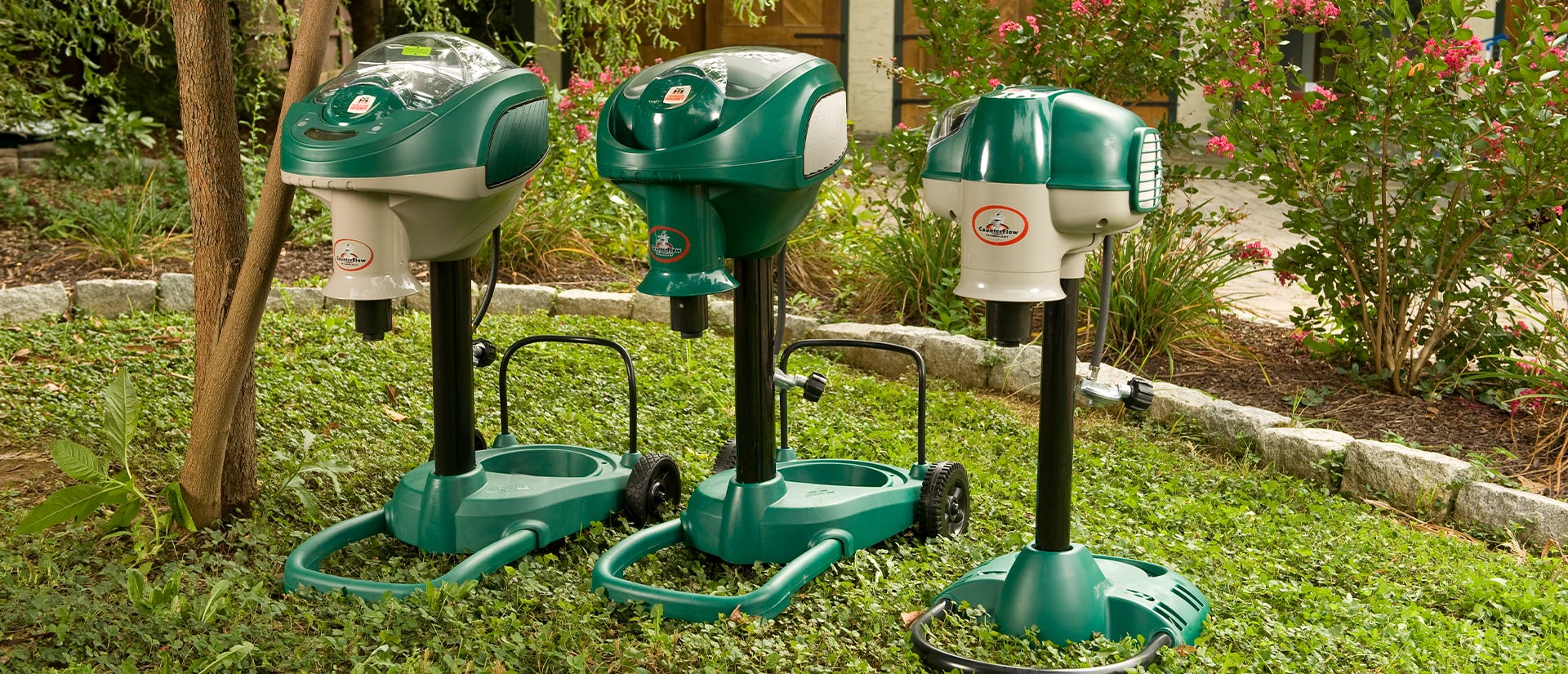
Mosquito Traps
Mosquito traps are an effective solution to safely eliminate mosquitoes from your yard. These traps lure mosquitoes by releasing a steady stream of carbon dioxide, moisture and heat. Once inside, mosquitoes are killed. These traps go to work right away, but it takes up to a month to break the mosquito breeding cycle.
Some traps will attract mosquitoes and suck them in using a propeller, while others use a vacuum. Once inside, mosquitoes are either trapped by sticky paper that traps them where they land or nets that hold them in place until they dehydrate.
To get the most out of mosquito traps, you need to replace necessary propane tanks or capture nets regularly. Sticky boards require cleaning or changing periodically.
Keeping the trap clean is important to ensuring it works effectively. Even during mild weather when mosquitoes are not as prevalent, you’ll want to change nets as directed — they are prime spots for collecting debris and pollen.
Mosquito Magnet® offers several mosquito trap models, including the Patriot Plus and Executive. The traps work by converting propane to carbon dioxide (CO2) along with heat and moisture to attract the pests.
Using Counterflow™, the trap vacuums mosquitoes into the trap, where they dehydrate and die within 24 hours. For Mosquito Magnet® traps, there are also accessory options such as trap covers, nets, and attractants.
To keep the trap working effectively, change the propane tank and filters every 21 days. Each trap will effectively protect up to a one-acre area. Over 18 years of research and 15 patents have gone into making Mosquito Magnet® traps to ensure they dramatically reduce the mosquito population in your outdoor recreation or living area.
According to the American Mosquito Control Association (AMCA), there is evidence that shows mosquito traps capture more female mosquitoes than males — but the number can vary depending on the concentration of carbon dioxide used.
The effectiveness of your mosquito trap can also depend on a variety of factors:
- Individual mosquito tolerance level
- Size of the mosquito population
- Wind velocity and direction
- Breeding habits leading to re-infestation
- Species of mosquitoes in the vicinity
- Placement of traps (30 to 40 feet from human activity)
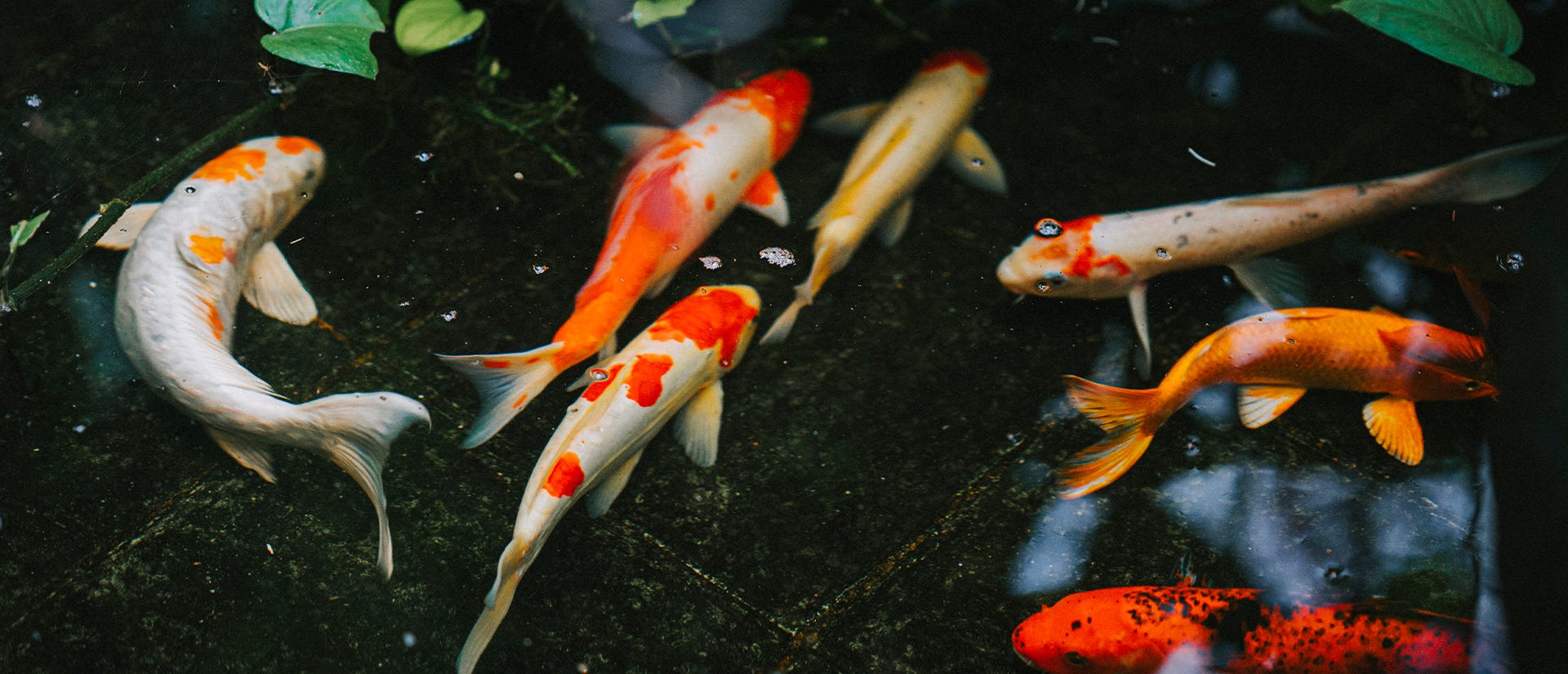
Mosquito Larval Control
Mosquitoes don’t become winged air-borne pests until they are mature enough to leave the water.
Homes with ornamental ponds and other forms of standing water can become a breeding ground for mosquitoes, which can dramatically increase your pest problem. Since mosquitoes lay their eggs in water and they live in water during their larval stage, adding natural predators to water can be an effective solution.
Mosquitoes also prefer still water, so any shallow, stagnant water around your home can become a breeding ground for the pests. Take steps to eliminate areas of stagnant water by emptying water that accumulates in old tires or anything that can hold and trap water.
Change the water in wading pools and bird baths every couple of days.
If you live near ditches with water that doesn’t flow properly, you can report this to the Public Health Office. Ditches may be protected by certain wetland regulations.
If you have a pond, fountain or other outdoor water features, mosquito control options that begin eliminating the pests at the larval stage can help reduce the amount of mosquito populations.
These disks or briquettes contain Bacillus thuringiensis Israelensis (Bti), which is a natural insecticide specific to mosquito larvae and certain types of semi-aquatic flies, but is safe to use around other aquatic organisms and in bird baths. One briquette or disk treats about a 100-foot square area for about 30 days. When replaced each month, these floating pellets can help reduce your mosquito population.
Mosquito fish are also a long-term solution for owners of ornamental ponds. These fish live in shallow, slow-moving ponds, streams, and lakes. These small fish have a big appetite and eat almost anything in their path, including mosquito larvae. One large female mosquito fish can eat up to 500 larvae per day.
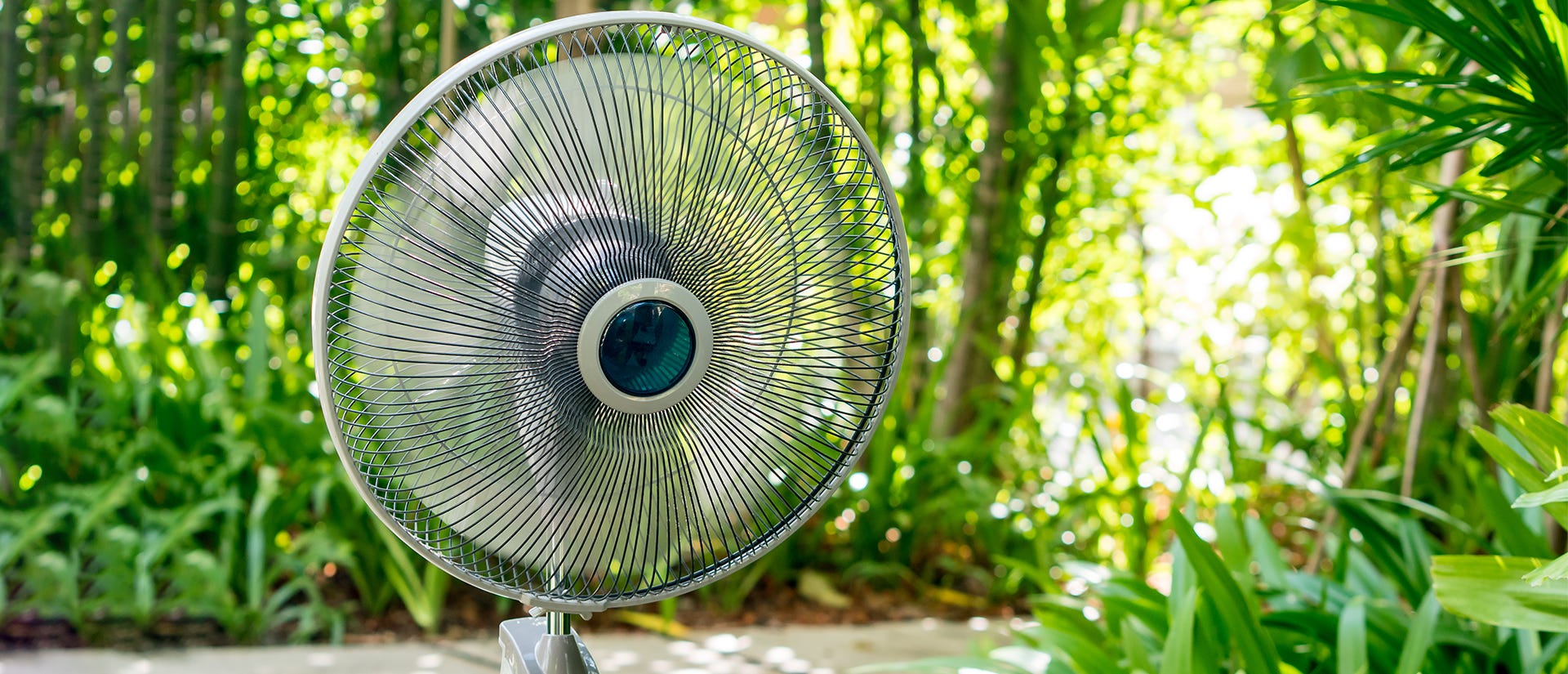
Air Curtains
Air curtains are a specialized, powerful fan that keeps mosquitoes away by creating a barrier. The air curtains blow a strong stream of air through a directed nozzle.
This air forms an invisible barrier that mosquitoes and other flying insects avoid. Because mosquitoes prefer areas with still air and avoid windy conditions, moving air will keep them away from your home and outdoor area.
Air curtains offer long-term solutions for outdoor living or entertaining areas, even porches and patios. Air door systems mounted above entrances keep mosquitoes away without affecting the people around them. They also offer quiet operation and easy installation and maintenance.
Air curtains placed above entryways can also help detour rodents and work as an energy saver, reducing your energy costs by about 30 percent. Placing fans around your patio or deck can act as short-term mosquito solutions.
The wind will keep the pests away from you and your family for the time being, but a trap might be a better option for keeping them away permanently.
Mosquito Misting Systems
A variety of mosquito misting systems are available for residential use. Both drum-based and tankless systems use insecticides to kill mosquitoes that fly into your outdoor space.
The drum-based misting stations have an agitation cycle that keeps the insecticide mixed, while the tankless models mix the insecticide formula when activated. These units spray a fine mist of insecticide that kills mosquitoes and other outdoor pests.
Some are activated using a switch, while others are operated using a remote control. Most include spray nozzles that can be mounted around the yard on fences or other outdoor areas.
Misting systems often use pyrethrin or permethrin. Pyrethrin is a non-toxic insecticide made from certain varieties of chrysanthemums.
Permethrin is a synthetic, low-toxicity insecticide made from pyrethrin botanicals. Humans and pets may come into contact with these products by touching plants in the treated area or inhaling the mist, but the Environmental Protection Agency (EPA) considers them a low risk. Some models come with extra features, such as wind censors, leak detection with automatic shut-off, or an agitation cycle that supplies a consistent insecticide concentration.
The AMCA lists several disadvantages of using misting systems. These include:
- Needless pesticide use due to insufficient monitoring
- Risk of insecticide resistance in mosquitoes
- Danger of insecticide exposure from not properly following directions
- Threat to beneficial insect populations
To reduce the disadvantages associated with misting systems, it’s important to understand the safety precautions and the EPA’s role in regulating misters. You can also choose a long-term solution that employs an effective trap or net to capture mosquitoes without insecticides.
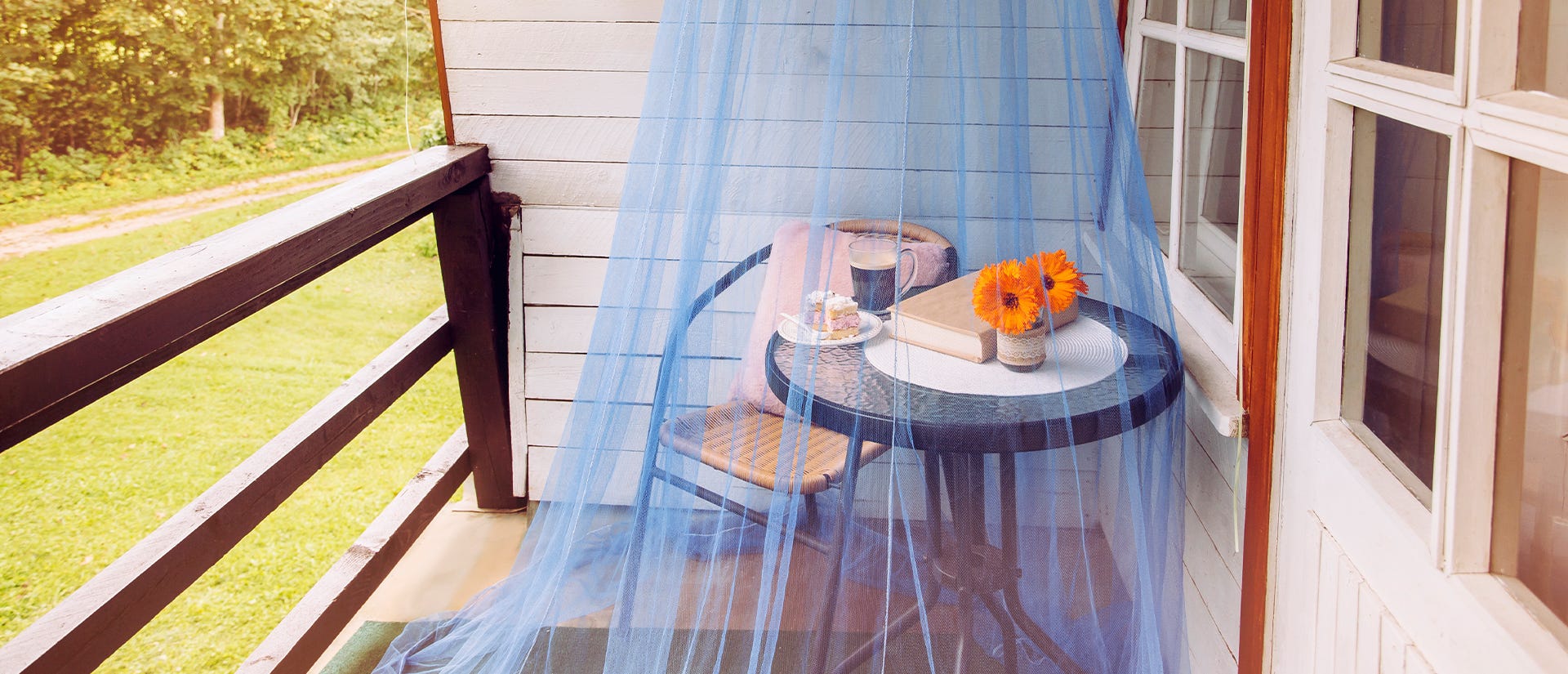
Mosquito Nets
Mosquito nests act as barriers to keep your outdoor patio or deck mosquito-free. Most people think of nets as unattractive, but you can use netting as stylish curtains.
Soft netting material is available in stylish options, so it can complement your outdoor living space, while effectively preventing mosquitoes and other pests from crashing your outdoor party.
Mosquito nets may not be as effective as other trapping mechanisms, but you can also use the soft form of netting to control sun and shade.
Consider Integrated Pest Management Practices
Integrated Pest Management (IPM) is an environmentally-sensitive approach to controlling pest populations, while reducing the amount of negative impact on the environment.
The idea behind IPM is to control pests and keep them at a tolerable level without completely eradicating the pests. To practice IPM, you can start by using the simplest and least intrusive measures of control first such as a Mosquito Magnet® trap.
Only turn to heavy-duty measures, such as pesticides, when absolutely necessary. While chemical insecticides may quickly put a stop to insect infestations, they can also kill beneficial insects, harm the environment, and pose a hazard to your family.
Working with the least toxic controls first keeps nature in balance and establishes a natural balance in your yard. For insects, this can include encouraging natural predators.
Bats and birds feed on mosquitoes, so building bat houses and placing bird feeders around your home can help attract these mosquito predators to your yard. One brown bat can devour up to 1,000 mosquitoes each hour. While some people may dislike the thought of bats in their yard, they are beneficial to nature.
Purple marlins also eat mosquitoes as they sail through the air. They eat many other flying insects, so while they may help eliminate some mosquitoes, you cannot depend on these birds for complete mosquito control.
Mosquitoes Have a Purpose
You may think that mosquitoes — pests that carry dangerous diseases — have no place in the natural order of life, but they do. While you do need to control them to reduce the risk of contracting the viruses they may carry, like all creatures, mosquitoes have a purpose.
Mosquito larvae and adults are an important part of the food chain for animals. Because mosquitoes lay eggs in water, their larvae make a tasty meal for aquatic animals, including fish and frogs.
Adults are tasty, nutritious food for flying animals, such as bats, spiders, dragonflies, and birds. Their role on the bottom of the food chain makes them essential wildlife survival.
As much as you hate these annoying pests, their eradication would cause a vast adverse effect on the world’s ecosystem. Mosquitoes are also able to adapt to changes in the environment, making them almost impossible to completely eradicate.
When considering IPM practices or other outdoor mosquito control options, start with control efforts, such as avoiding the outdoors when mosquitoes are most active and using Mosquito Magnet® traps as an alternative to misting systems that use pesticides.
Combining Different Mosquito Controls
Mosquito control often requires a combination of control methods, because individual efforts are not always effective in keeping mosquito populations under control.
Combination approaches including using larval control methods for ponds, keeping weed growth down around your property, eliminating standing water, and using a trap or other long-term solution to effectively keep your outdoor space mosquito-free.
You can also combine short-term solutions when necessary. Some common short-term mosquito control solutions include the following:
- Placing citronella candles on your deck or patio
- Using foggers to temporarily eliminate mosquitoes in certain areas
- Running fans at ground level during outdoor parties or activities
To choose which control methods are right for your backyard, compare each solution and create an effective plan that will work best for your outdoor pest needs. Instead of spending your money on bug zappers, candles and other mosquito control methods that only provide short-term control, consider making an investment in a long-term solution.
Effective mosquito control makes the time you and your family spend outdoors more enjoyable and gives you peace of mind, knowing your family is safe from mosquito-borne illness.
At Mosquito Magnet®, we have mosquito traps that will help you make your backyard disease and mosquito-free — without resorting to dangerous insecticides. Browse our mosquito trap options, or contact our team to learn more about the best ways to control these pests.
Sources:
- http://ag.arizona.edu/pubs/insects/az1221/
- http://www.mayoclinic.org/diseases-conditions/west-nile-virus/basics/symptoms/con-20023076
- http://www.mayoclinic.org/diseases-conditions/encephalitis/basics/complications/con-20021917
- http://www.mosquito.org/faq
- http://www.mosquitomagnet.com/take-back-your-yard
- http://ianrpubs.unl.edu/live/g2037/build/g2037.pdf
- http://www.sciencedaily.com/releases/2014/05/140519091925.htm
- http://www.mosquito.org/index.php?option=com_content&view=article&id=92&Itemid=159
- http://www2.epa.gov/mosquitocontrol/mosquito-misting-systems
- http://funvide.com/blogs/mosquito-net/
- http://www.epa.gov/opp00001/factsheets/ipm.htm
- http://www.nature.com/news/2010/100721/full/466432a.html
- http://www.in.gov/dnr/parklake/files/MosquitoWestNileInfo.pdf
- http://www.amcdsjc.org/mosquito--pest-info/biology/lifecycle.aspx

